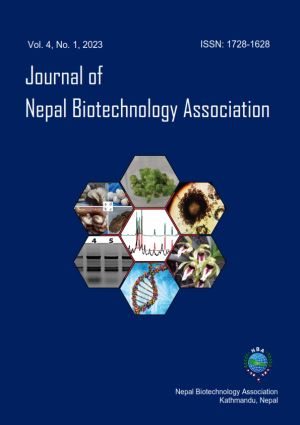Detection of Respiratory Syncytial Virus in Suspected Asthmatic Children by Conventional RT-PCR Assays in Kathmandu
DOI:
https://doi.org/10.3126/jnba.v4i1.53447Keywords:
Asthma, Nucleocapsid (N) gene, RSV, RT-PCRAbstract
Respiratory Syncytial Virus (RSV) is the most common causative agent for lower respiratory tract infections in children particularly in infants. At least 50% of children are infected with RSV by the age of 2 to 3 years of age. However, the diagnosis of the RSV infection and its association with risk factors for asthma in asthmatic children is not studied in Nepal. The objectives of this study were to determine the prevalence of RSV in asthmatic children. This work was a hospital based cross-sectional prospective study and conducted from September 2017 to February 2018. Ethical approval was obtained from the Institutional Review Committee (IRC) of Kanti Children’s Hospital, Maharajgunj. Suspected asthmatic children visiting the Special Asthma OPD of Kanti Children’s Hospital, Maharajgunj were selected with the help of asthma specialist using a set of inclusion criteria for asthma. A total of 32 nasal swab samples were obtained from suspected asthmatic children. Initially, samples were processed for RNA extraction. The extracted RNA was then used for cDNA synthesis followed by PCR using primers for the Nucleocapsid (N) gene of RSV. Out of total 32 samples, 9 (28%) samples were positive for the N gene of RSV. There was no significant association of different variables including age (P=0.187), sex (P=0.264), family history of asthma (P=0.115), passive smoking (P=0.88), birth weight (P=0.954), seasonality (P=0.298) and history of pneumonia (P=0.457) with the RSV infection in this study.




